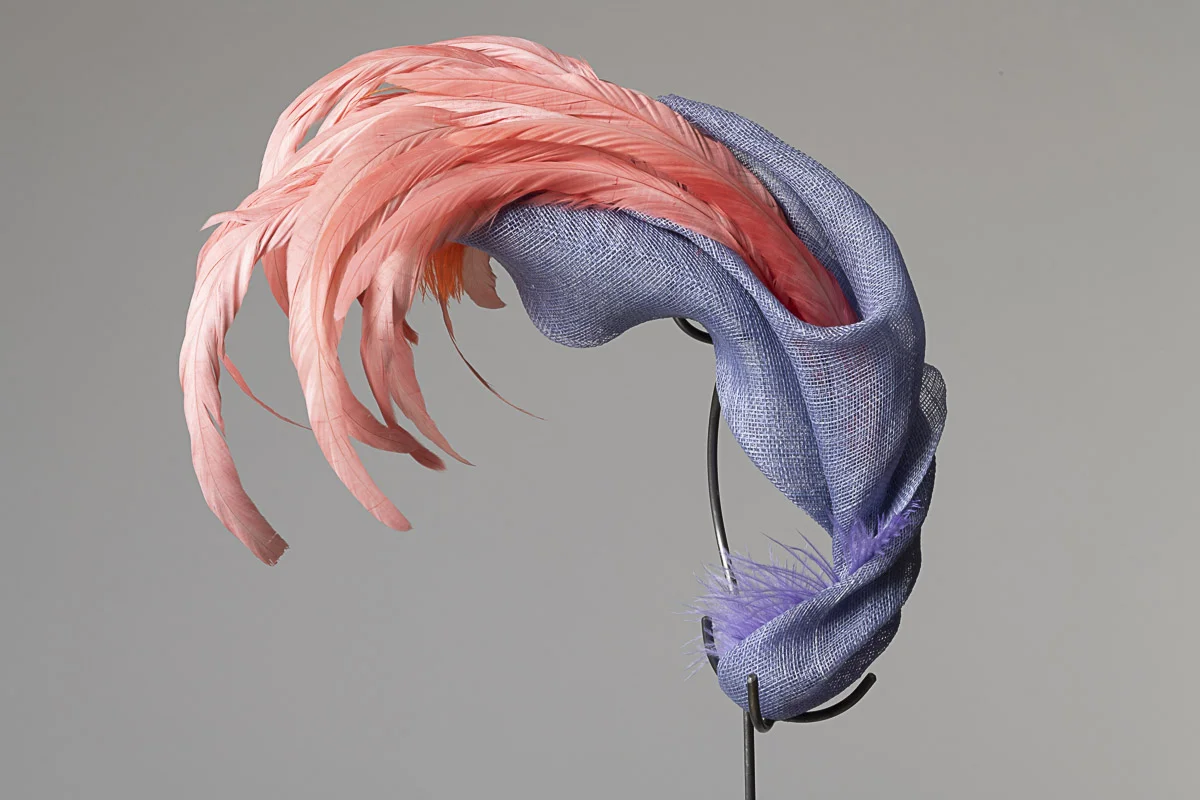













Your Custom Text Here
In this collection are hats that resemble imagined plants and animals. These creatures are extremely rare and illusive: they are presented as if in a natural history museum, on custom made stanchions for your inspection. Contemplating these exotic specimens, notice the similarities they share to more ubiquitous species: a bit of coral, crustacean, or beetle.
Are these strange specimen things we want to wear? Are they even wearable to begin with? Most animals are not. What drives our desire to cover our heads and bodies with bits of other heads and bodies? Perhaps it is beauty. The breadth of nature’s biological mutations saves us from mundanity. Just like water, food, and shelter, the act of decoration is a basic necessity. Since the end of our quadruped days, humans have supplemented their delicate skin and flat hair with more exciting natural bi-products from all over the animal kingdom. Be it furs, feathers, beetle’s wings, or wool, animals have been a fruitful source for creative body adornments.
This human need has driven many species to endangerment and some to extinction. Hats are the unassuming culprit for the destruction of exotic bird populations resulting in subsequent laws and regulations against using their feathers. Roosters and Ostriches are birds who have been domesticated, and thus their feathers unregulated.
These pieces are designed to be avant-garde but made using traditional millinery techniques. Natural forms are fashioned from human hands with fairy-like fingers. Feathers are manipulated and stitched to look as if they are growing organically out of a felt or straw base.
While these creatures before you may seem aquatic or alien or something new all together, they are in fact much more common. They are just hats.
In this collection are hats that resemble imagined plants and animals. These creatures are extremely rare and illusive: they are presented as if in a natural history museum, on custom made stanchions for your inspection. Contemplating these exotic specimens, notice the similarities they share to more ubiquitous species: a bit of coral, crustacean, or beetle.
Are these strange specimen things we want to wear? Are they even wearable to begin with? Most animals are not. What drives our desire to cover our heads and bodies with bits of other heads and bodies? Perhaps it is beauty. The breadth of nature’s biological mutations saves us from mundanity. Just like water, food, and shelter, the act of decoration is a basic necessity. Since the end of our quadruped days, humans have supplemented their delicate skin and flat hair with more exciting natural bi-products from all over the animal kingdom. Be it furs, feathers, beetle’s wings, or wool, animals have been a fruitful source for creative body adornments.
This human need has driven many species to endangerment and some to extinction. Hats are the unassuming culprit for the destruction of exotic bird populations resulting in subsequent laws and regulations against using their feathers. Roosters and Ostriches are birds who have been domesticated, and thus their feathers unregulated.
These pieces are designed to be avant-garde but made using traditional millinery techniques. Natural forms are fashioned from human hands with fairy-like fingers. Feathers are manipulated and stitched to look as if they are growing organically out of a felt or straw base.
While these creatures before you may seem aquatic or alien or something new all together, they are in fact much more common. They are just hats.